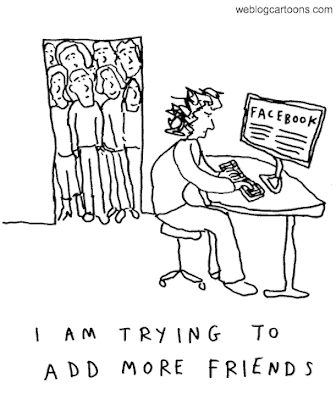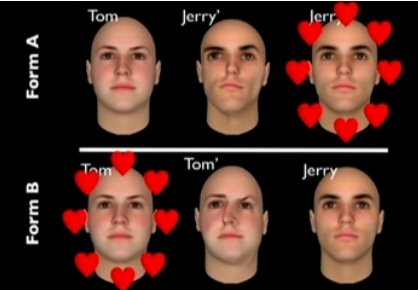Tagged: psychology
Fear and Why We Enjoy it

Fear. It’s something all humans share in their arsenal of emotions and reactions. It’s a survival mechanism that we’ve evolved to have, and it’s what has kept us alive for close to up to 200 millennia. It’s a feeling that we both dread and revel in nowadays, especially during every spooky Halloween season. But why do we enjoy fear every fall season?
From horror movies to haunted houses, we all enjoy these activities, especially in groups of friends. Fear has turned from something so necessary for survival to something that’s required in for social acceptance. According to Kansas State University’s Don Saucier, since Halloween is a holiday that is so culturally embedded into our society, fear is practically interwoven in the very fabric of Halloween. It’s something that’s unavoidable. At this point in history, because we aren’t really fighting for our survival, participating in fear inducing activities is more than socially acceptable; it’s necessary especially because subconsciously we know we really aren’t in serious danger.
So what happens to your body when you experience fear? Sweating, temporary brain function reactions, respiration, and your heart and blood (among other reactions) are temporarily different during the time of the emotion and even after. Your amygdala releases chemicals that either make you confront your fear or run away. Your sweat actually smells differently from regular sweat and it’s said that it could enhance your alertness. Obviously heart rate and blood pressure increases which pump more blood to your muscles and lungs should your body choose to run away. Due to the increase blood flow, your respiration also increases so that there’s increase in oxygen to your blood. Reading all of this, you’d think, why in the world would we even enjoy these feelings when we react to fear? Well it really depends on the person. Those who seek out horror and fear probably have an adrenaline-seeking personality, and what better way to get that adrenaline than after watching a horror movie or getting frightened at a haunted house. The relief response after fear intensifies positive emotions and feel-good chemicals (like endorphins) are released into our brain.
To some extent, fear induces arousal when in an environment where the person feeling it feels out of danger – i.e. sweating, hand-shaking fun. So the next time you enter a haunted house or watch a horror movie, know that this survival mechanism no longer is a means for safety from danger but another way to induce excitement and fun with friends.
~Cindy Wu
Sources:
http://neurosciencenews.com/fear-psychology-social-standing-2956/
http://www.livescience.com/56691-the-science-of-fear.html
http://www.livescience.com/56682-the-anatomy-of-fear-infographic.html
http://online.csp.edu/blog/psychology/psychology-of-fear
Image Source:
https://www.maynoothuniversity.ie/sites/default/files/styles/ratio_2_3/public/assets/images/FEAR.jpg?itok=vBWci5ug
Stockholm Syndrome Explained by the Stanford Prison Experiment
Stockholm Syndrome can be referred to as a joke in the popular culture, and many people do not take it seriously as much as other common psychiatric problems such as PTSD, a psychological illness usually caused by a traumatic event like physical aggression. It cannot be treated seriously because there is no medical standard to properly diagnose a person with “Stockholm Syndrome.” However, this supposed illness is a real problem that affects the minority of people who are abducted usually by criminals who have no interest in the hostage’s safety.
The first recorded case of hostages with Stockholm Syndrome was during a bank robbery in Stockholm, Sweden. In August 23 to 28, 1973, the bank robbers negotiated with the police to leave the bank safely. While trying to form an agreement, the majority of the captive bank employees were unusually sympathetic towards the robber, and, even after being set free, refused to leave their captors. The criminologist and the psychiatrist who were investigating the robbery coined the term for their conditions “Stockholm Syndrome.”
The Psychology of Facebook
Psych Central’s April Fool’s Day Joke for 2011 was an article that read: “Facebook Revealed to be Psychology Experiment Gone Wrong.” The author used a fake source of Harvard University and several quotes from ‘professor of psychology’ Mark Zuckerberg. This article seemed pretty believable...for about a day.

The researchers behind this project claimed to be interested in “whether or not people in the class would immediately become competitive and try and gain as many friends as possible.” And though this research experiment is far from the truth, the psychological implications of Facebook are certainly a reality.
Rishi Bandopadhay of PsyBlog equated Facebook networking to a competitive sport. He listed 7 rules to ‘get ahead’ using Facebook.
- Get between 100 and 300 friends. (You don’t want to look like a loner, or like you are trying too hard)
- Court attractive friends (Walther et al. (2008) found that attractive friends boosted the perceived attractiveness of participant's profiles)
- Understand the 7 motivations (Joinson (2008) found 7 basic motivations for using Facebook: connecting with old or distant friends, social surveillance (see what old friends are up to, but without talking to them), looking up people met offline, virtual people watching, status updating and content)
- Don’t let your partner use Facebook (Muise et al. (2009) found that the more time spent on Facebook, the more jealousy)
- Guard your privacy
- Display your real self
- Use Facebook to get a job
Is Facebook really this competitive? I can’t remember the last time I noted how many Facebook friends someone had or judged their popularity by their friends’ good looks. Facebook can also tell you a lot about someone’s personality.
Buffardi and Campbell of the University of Georgia found that individuals’ level of activity on their social networking website is strongly correlated to their level of narcissism; this finding is relatively obvious. It’s easy to see which friends of ours, whose ‘activities’ constantly show up on our newsfeed, are self-centered.

Next Orr, Sisic, Ross, Simmering, and Arseneault set out to study correlations of shyness to various aspects of social networking websites. They found that shy people spend considerably more time on Facebook than people who are not; however, these shy people also had considerably fewer friends, despite their increased time spent on Facebook. So the quiet kid who sits in the back of your Statistics class has probably Facebook stalked you, but you’ll never be receiving a friend request because that person does not have the guts to hit “Send Request.”
Psych Central- Facebook Revealed to be a Psychology Experiment Gone Wrong
PsyBlog- Facebook: 7 Highly Effective Habits
The Layman's Guide to Psychology- The Psychology of Twitter, Facebook, and other Social Networking Devices
I <3 Kim Kardashian
They can’t stop talking about her. “Look at how popular and successful she is!” “Look at how stupid and ditsy she is!” “What has she done to be so famous?” … Well, I don’t care if she’s smart or stupid, rich or poor. The only things I see when she’s on the screen are those voluptuous curves. Regardless of what you think of her, Kim Kardashian has what most men dream of. Since this is a nerds’ blog, we’re going to take the moment to examine why we men like those curves so much.
Men like women with large curves because these provide an adaptive advantage, increasing the likelihood of the propagation of genes. Wide hips are adaptive because they make child birthing easier (more successful); large breasts may provide more nutrition during nursing. The men who go for the curves are more likely to make successful offspring; those offspring incidentally share the same instinct for curves and eventually make more progeny; and the cycle continues.

Now, Kim Kardashian is what you call a supernormal stimulus. She has everything that normally elicits a positive response but exaggerated. “Supernormal stimulus,” by the way, is attributed to the famous ethologist Niko Timbergen, who found that substituting a mamma-seagull’s white beak with its one red spot for a stick with three red spots made the chicks way more excited for food. Many more such examples have been described in a variety of animals. More
The Magic Facebook Mirror
"Magic mirror on the wall, who is the fairest one of all" says the evil Queen of Snow White and the Seven Dwarfs. I don't deny that growing up on Disney gave me a somewhat skewed sense of reality at times. Wouldn't it be nice to all have our own magic mirrors, constantly reminding us how wonderful and beautiful we are in the midst of the stress that is life?
A recent study by researchers at Cornell University have shown that we may actually have such a magic mirror - Facebook, as fate would have it. There are varying opinions concerning internet use on our personalities, but this study shows that Facebook can have a short term positive effect on self esteem. More
Moral Code
Why is it wrong to kill babies? Why is it wrong to take advantage of mentally retarded people? To lie with the intention of cheating someone? To steal, especially from poor people? Is it possible that Medieval European society was wrong to burn women suspected of witchcraft? Or did they save mankind from impending doom by doing so? Is it wrong to kick rocks when you’re in a bad mood?
Questions of right and wrong, such as these, have for millenia been answered by religious authorities who refer to the Bible for guidance. While the vast majority of people still turn to Abrahamic religious texts for moral guidance, there are some other options for developing a moral code. Bibles aside, we can use our “natural” sense of what’s right and wrong to guide our actions; a code based on the natural sense would come from empirical studies on what most people consider to be right or wrong. Ignoring the logistics of creating such as code, we should note that the rules in this code would not have any reasoning behind them other than “we should do this because this is what comes naturally.” How does that sound? Pretty stupid.
The other option is to develop a moral code based on some subjective metaphysical ideas, with a heavy backing of empirical facts. “Subjective” means these ideas won’t have an undeniability to them; they are what they are and that’s it. Take as an example the rule such as “we should not kill babies.” There is no objective, scientific reason why we shouldn’t kill babies. Wait!, you say, killing babies is wrong because it harms the proliferation of our species and inflicts pain on the mothers and the babies themselves! But why should we care about the proliferation of our species? About hurting some mother or her baby? While no one will deny that we should care about these, there is nothing scientific that will explain why. Science may give us a neurological reason why we care about species proliferation (it will go something like, “there is a brain region that makes us care about proliferation of our species.”), but why should we be limited to what our brains tend to make us think or do?
Subjective rules like these must therefore be agreed upon with the understanding that they are subject to change. Interestingly, some argue that science can answer moral questions because it can show us what “well-being” is, how we can get it, etc. But the scientific reason why we should care about well-being is nowhere to be found. The result is that we can use science to answer moral questions, but we have to first agree (subjectively) that we want well-being. Science by itself cannot answer moral questions because it shows us what is rather than what ought to be. (Actually, Sam Harris is the only one to argue that science can be an authority on moral issues; his technical faux-pas is an embarrassment to those who advocate “reason” in conduct).

But more on the idea of metaphysically constructed moral codes. What properties should this code have, and how should we go about synthesizing it? Having one fixed/rigid source as an authority for moral guidance is dangerous. Make no mistake: there must be some authority on moral questions, but it must be flexible, and adaptable; it must be able to stand the test of time on the one hand, but to be able to adjust to novel conditions on the other. This sounds a lot like the constitution of the U.S. But even with such a document as The Constitution, which has provided unity and civil progress since the country’s founding, there are some who take its words literally and allow no further interpretation; if it’s not written in the constitution, it can’t be in the law, they argue (see Strict Constructionism versus Judicial Activism). These folks also tend to be rather religious (read: they spend a lot of time listening to stories from the Bible; not to be confused with “spiritual” or of religions other than the Abrahamic ones). So while we must have a moral code, it must be flexible (i.e. change with time) and we must seek a balance between literal and imaginative interpretations, just as we do with the US Constitution.
Why and how is a rigid moral authority dangerous? Our authority must change with time because new developments in our understanding of the world must update how we interact with others. For example, if science finds tomorrow that most animals have a brain part that allows them to feel emotional pain in the same way that humans do, we will have to treat them with more empathy; research on dolphin cognition has recently produced an effort by scientists to have dolphins be considered and treated as nonhuman persons. Furthermore, if we don’t explain why we do certain things, we won’t understand why we do them and therefore won’t know why violating them is bad. This unquestionability aspect of God as moral authority or the Strict Constructionists as law-makers is what makes them particularly dangerous and leads to prejudice and ignorance. Our moral code must therefore be based on empirical research, with every rule being subject to intense scrutiny (think of two-year-olds who keep asking, “but why?”).
But why should we have a moral code in the first place? Perhaps if everyone followed a moral code of some sort, the world would have fewer injustices and atrocities. Getting people to follow a moral code of any kind is a completely different issue.
Nonhuman Personhood for Dolphins
Creamy Corn or Two-Dollar Cookies? The Rise of Behavioral Economics
Imagine that you’ve just spent the whole morning working non-stop. You’ve been hushing your stomach  grumblings for the past hour and you cannot concentrate on anything but your hunger and that devastatingly slow-ticking clock.
grumblings for the past hour and you cannot concentrate on anything but your hunger and that devastatingly slow-ticking clock.
Another hour passes and that long awaited lunchtime break has finally come around. All you know is that you need food, and you need it now, so you decide to stay in your building and rush to the cafeteria. You enter, put your things down, and begin the search.
Which foods will you choose? Or, which foods will choose you?
Brian Wansink and David R. Just are trying to answer that question, specifically pertaining to children. In addition to being faculty at the Dyson School of Applied Economics and Management at Cornell, Wansink and Just are co-directors of the newly launched Cornell Center for Behavioral Economics in Child Nutrition Programs. With a $1 million grant from the U.S. Department of Agriculture, the center will provide valuable research on subtle behavioral influences, helping efforts to “nudge" children into making healthier eating choices.
Wansink says, "We're taking some of the best researchers in the nation and pairing them with schools to figure out new, cool ways to get people to eat healthier.” For example, "by strategically placing healthy food at both the beginning and end of school lunch lines, more children choose them.”
Naming foods more descriptively, charging extra for dessert, and placing healthy foods like fruits into baskets  also increased choice of healthier foods. Other interesting techniques Wansink and Just suggest can be seen in Joe McKendry’s illustration in The New York Times.
also increased choice of healthier foods. Other interesting techniques Wansink and Just suggest can be seen in Joe McKendry’s illustration in The New York Times.
The benefits of this research seem clear enough. Children who are encouraged to eat healthier each day at school will likely develop long-lasting, healthy habits. These habits can then help reduce their risk of obesity and associated diseases.
So what about the drawbacks? Are there any? Is changing the way options are presented a violation of free will or choice? Just says he and his colleagues are “not eliminating choice... [they’re] pushing things where [they] can and not trying to do the impossible."
What do you think? Are there degrees of choice? Are Just and Wansink simply lowering the degree children have in selecting foods to eat? Either way, isn’t it sort of disturbing that such subtle changes in placement, naming, or presentation can influence your decisions, whether it be which foods you eat or which habits you’ll develop?
The research in the rising field of behavioral economics certainly leads one to ask these questions. Author of Predictably Irrational, Dan Ariely talks on TED about how irrational people are in their decisions. Particularly, he discusses how easily external forces can influence choices. For example, depending on how a question is worded or presented, people respond differently even though the two forms of the question are essentially the same.
One interesting study he conducted involves choosing the image of the most attractive man out of a total of three  men. Two of these images are of the same man, Jerry, but one is edited to make him less attractive by distorting the facial features. The other image is of another man, Tom. Most participants chose the more attractive version of Jerry. However, if instead there are two images of Tom, one less attractive, and one image of Jerry, most people choose the more attractive version of Tom. Even though the original images of Tom and Jerry remained in both sets, they did not receive the same response because of an external force.
men. Two of these images are of the same man, Jerry, but one is edited to make him less attractive by distorting the facial features. The other image is of another man, Tom. Most participants chose the more attractive version of Jerry. However, if instead there are two images of Tom, one less attractive, and one image of Jerry, most people choose the more attractive version of Tom. Even though the original images of Tom and Jerry remained in both sets, they did not receive the same response because of an external force.
Through these examples, Ariely demonstrates how much influence the designer, whether of surveys, forms, or tests, has on the decisions of the people filling them out. Do the people still have a choice to choose Jerry when unattractive Tom highlights regular Tom so well? If yes, then why do most people choose Tom? Are there degrees of choice involved? How about degrees of resistance to external forces? Do they change at all when the  designers have different intentions? For example, compare a store selling 2 shirts for the price of one and a cafeteria offering “creamy corn” and “two-dollar cookies.” Both places are trying to take advantage of subtle differences, but the cafeteria seems to have kinder intentions.
designers have different intentions? For example, compare a store selling 2 shirts for the price of one and a cafeteria offering “creamy corn” and “two-dollar cookies.” Both places are trying to take advantage of subtle differences, but the cafeteria seems to have kinder intentions.
What can we make of all this? Can we change how irrational, as Ariely might say, we are? If so, should we advocate the advances of behavioral economics in their kinder intentions, despite the seeming drawbacks?
Sources/Additional Readings:
Stealth Health for Kids – Newsweek
Lunch Line Redesign – The New York Times
New center, with $1 million grant, aims to make school lunchrooms smarter – ChronicleOnline, Cornell University
Daniel Kahneman: The Riddle of Experience vs. Memory – TED Talks
Dan Ariely: On Our Buggy Moral Code – TED Talks
A Portrait of Perception
Many a scientist has noted in the light of recent discovery that what has been scientifically elucidated has often been artistically intuited even hundreds of years before. Many phenomena of psychology or even physics have been illuminated first through the intuition and hypersensitive refl ection of art. Illusions within the visual arts that modify perception of space and movement understand the psychology of perception without being themselves a science. Looking at a painting, one may begin to question why and how the painting gives us a sense of light or space. Neuroscientists at the University of Leicester are putting this principle to use in a scientific study, teaming up with a well-known international artist whose pieces specialize in manipulating human percepts. They hope to work with him towards a greater understanding of how the mind apprehends visual stimuli.
ection of art. Illusions within the visual arts that modify perception of space and movement understand the psychology of perception without being themselves a science. Looking at a painting, one may begin to question why and how the painting gives us a sense of light or space. Neuroscientists at the University of Leicester are putting this principle to use in a scientific study, teaming up with a well-known international artist whose pieces specialize in manipulating human percepts. They hope to work with him towards a greater understanding of how the mind apprehends visual stimuli.
The neuroscientist, Rodrigo Quian Quiroga, attained renowned status after discovering a particular type of neuron that fired in an ‘abstract’ manner to pictures of different individuals, allowing for some predictive value of whom the person was looking at from a data of their neuronal firing. Fascinated with human perception, he teamed up with well-known Argentinean artist Mariano Molina to study the mind’s perception of art, particularly in juxtaposition to its perception of regular photos and individuals. Molina will spend five months working in the lab, learning about how perception works from a scientific viewpoint. In turn, Quiroga will get a look at perception through an artist’s frame.
Molina has discovered that many of his pieces of art intuit unconscious principles of perception that science had previously identified. Consider one of Molina’s paintings: “The Center of Gaze.” Staring into it, one’s eyes are immediately drawn to the center. Center? How do I know that’s the center? At least, that would be the afterthought of one with a normal sense of perception. Upon further study, conscious reflection dwells on the “how” behind what the eye has intuited. This process that an individual feels within herself, the ex post facto rationalization of a quick and thoughtless, yet insightful, perception is akin to the methodology of the project itself.
Molina will complete a dozen pieces of art within a five month period, helping to draw insight into perceptual processes intuited by the artist. Molina believes that his artistic ability will also benefit from the scientific understanding of perception. Scheduled to begin in November, the project is hoped to bring scientific knowledge as well as an enriched appreciation for art, and encourage communication between the sciences and the arts that is of mutual benefit.
How Do We Perceive Art? Artist in Residence to Work Alongside Neuroscience Research Lab -Univ. Leicester